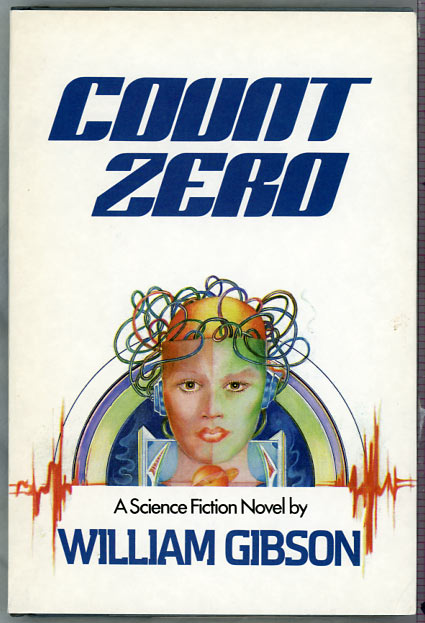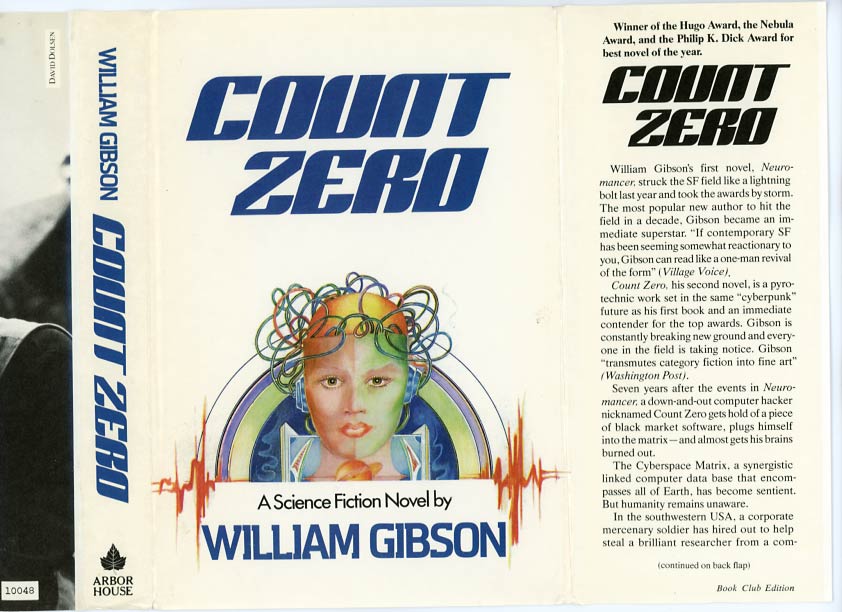
author:
title:
Gibson, William
COUNT ZERO
book-date: 1986
edn-date:
printing:
format:
cvr art:
cvr price:
GRADING:
1986
Hardcover
Book= Fine
Dustjacket= Fine-
Science Fiction Book Club August 1986 hardcover, (matches the Arbor House hardcover from March of that year.) Cover by ???, 278 pages. Condition is Fine in a Fine (-) dustjacket: very tight and square; maybe some slight bumping at bottom spine end; age tanning is negligible. No stamps marks or writing - a very clean copy. Unclipped DJ has no tears and 1/8" of wear at bottom left corner of back cover. This looks new/unread.
William Gibson's second novel, Count Zero (1986.) This is set in the same "cyberpunk" future as his first (Neuromancer.) Serialized in Isaac Asimov's Science Fiction Magazine January to March 1986, it was nominated for both Hugo and Nebula "best novel" awards.
The future is a world where teeming poverty coexists with great affluence. This is a world where technology and artificial intelligence assume unimagined and sinister proportions. Seven years after the events in Neuromancer, a down-and-out computer hacker nicknamed Count Zero gets hold of a piece of black market software, plugs himself into the matrix - and almost gets his brains blown out. The Cyberspace Matrix, a synergistic linked computer data base that encompasses all of Earth, has become sentient. But Humanity remains unaware. In the southwestern USA, a corperate mercenary soldier has hired out to help steal a brilliant researcher from a competing corporate fortress. The attempt is a disaster and he ends up with the scientist's young daughter, whose nerve system has been altered to allow her direct access in her head to the Cyberspace Matrix. But she is not conscious of this. And in France, a young womann art gallery owner is hired to find the marvelous and unknown creator of mysterious and uniquely powerful art objects that have been filtering into the marketplace out of the vast underground of the sprawl. All these characters and events intertwine and resolve into an awesome and complex pattern, clear and frightening.
This one is only loosely connected to his first book, sharing technology and corporations and locales. I didn't spot any common characters, but several mentions of Chiba (City.) Perhaps this is Gibson's way of telling us that it's a really big world, with lots of room for stories. He is one of the few SF authors to consider the impact of technology on art, and the nature of art - and that's one of the many reasons I admire his work.

